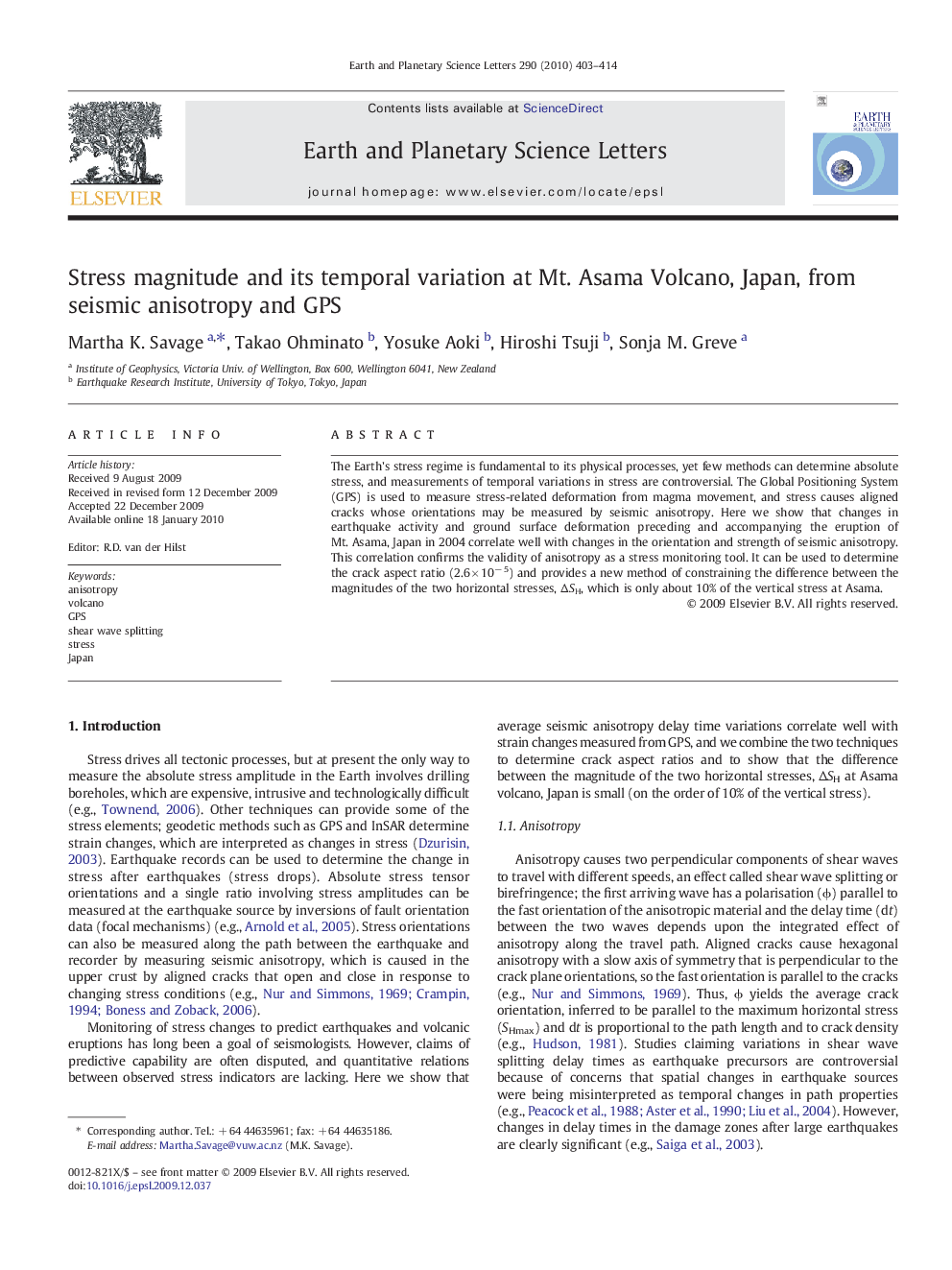| Article ID | Journal | Published Year | Pages | File Type |
|---|---|---|---|---|
| 4678516 | Earth and Planetary Science Letters | 2010 | 12 Pages |
The Earth's stress regime is fundamental to its physical processes, yet few methods can determine absolute stress, and measurements of temporal variations in stress are controversial. The Global Positioning System (GPS) is used to measure stress-related deformation from magma movement, and stress causes aligned cracks whose orientations may be measured by seismic anisotropy. Here we show that changes in earthquake activity and ground surface deformation preceding and accompanying the eruption of Mt. Asama, Japan in 2004 correlate well with changes in the orientation and strength of seismic anisotropy. This correlation confirms the validity of anisotropy as a stress monitoring tool. It can be used to determine the crack aspect ratio (2.6 × 10− 5) and provides a new method of constraining the difference between the magnitudes of the two horizontal stresses, ΔSH, which is only about 10% of the vertical stress at Asama.
